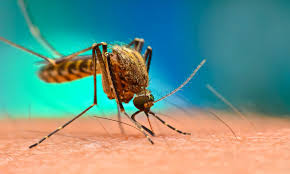About 700 malaria cases recorded since January in Hwange have forced health authorities to consider resuming Indoor Residual Spraying (IRS) in some wards after having suspended the activity two years ago.
Hwange district had made significant progress towards eliminating malaria through various intervention methods, and the Ministry of Health and Child Care had as a result excluded most parts of the district including Hwange and Victoria Falls urban from mosquito IRS spraying in the past three years.
The district had moved to mosquito net distribution to prevent malaria-causing mosquitoes and now there are fears people may not be using the nets because of the rise in positive cases recorded at Lukosi and Kamativi hospitals, both in Hwange East.
From the first week of January, over 630 positive cases have been recorded at Lukosi Hospital and about 40 at Kamativi hospital.
No death has been officially reported.
In response, health authorities are mobilising resources to resume spraying in hotspot wards namely Simangani, Kamativi, Lupote, Dete, Mabale, Lukosi, Change, Nekabandama and Makwandara which were not sprayed in 2022.
The district held an emergency civil protection unit meeting on Thursday to appeal to various organisations for resources such as ambulances, food and other requirements.
“For a long time, Hwange has been in the control phase of malaria where intervention involved case management. Through the years we had done so well and incidents had gone down and last year Hwange was removed from control areas.
“So we moved from IRS to nets as the rest of the district except for five wards had moved to elimination stage and we were distributing nets,” said Hwange District Medical Officer Dr Fungai Musinami.
“So this year we have seen an increase in incidents in Kamativi and Lukosi and the situation is dire. We really need assistance, as a Ministry, we have tried to supply Lukosi Hospital with test kits but it’s difficult to keep up.”
She said Lukosi Hospital is almost crowded.
Pregnant women are also in danger.
“It is difficult to monitor use of nets and we want to spray around Change and Nekabandama starting next week,” said Dr Musinami.
She called upon all institutions to have emergency preparedness plans and sensitise people about the prevalence or malaria.
Countrywide, 39 people have succumbed to malaria since the beginning of the year with a cumulative total of 17 623 cases recorded so far.
About 300 were children aged under the age of five.
The worst affected provinces are Manicaland and Mashonaland Central provinces.
The ministry of Health has encouraged communities living near drainable swamps to make drains to enable water to flow as it helps reduce the mosquito density.
Mosquitoes breed in shallow and stagnant water, empty containers such as tins, drums, plastics and tyres, roof gutters, disused swimming pools and fish ponds, pits, reservoirs and tanks, including septic tanks.
Symptoms of malaria include fever and very high temperature, headache, joint pains and severe body weakness (unable to sit, loss of appetite, nausea and vomiting, jaundice in white palms which is a sign of anaemia, passing very little Coca-Cola-coloured urine or not passing urine at all and severe vomiting.
Malaria is a preventable and treatable disease that continues to have a devastating impact on the health and livelihood of people around the world.
Spike in malaria cases in Hwange jolts health authorities into action

